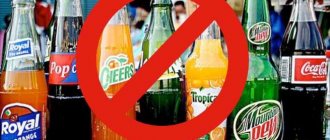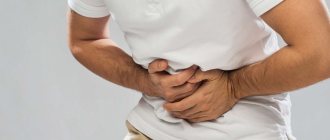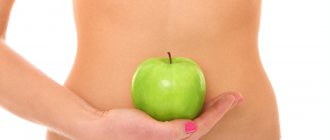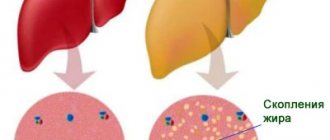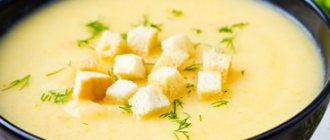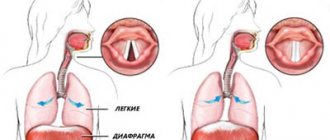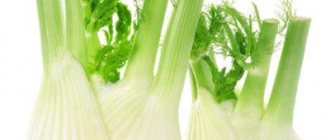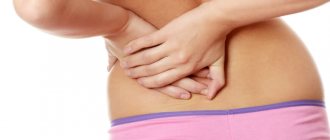- What does a diet do for cholecystitis?
- Diet therapy for acute cholecystitis
- Principles of diet for chronic cholecystitis
- What not to eat: prohibited foods
- What is allowed to be eaten?
- Sample menu for chronic cholecystitis
Diet therapy is the basis for the treatment and prevention of exacerbations in most diseases of the digestive tract. For people with cholecystitis, a well-designed diet becomes the basis for treatment and prevention of recurrent exacerbations. At the same time, the restrictions apply to both the composition of the food basket and the method of heat treatment, and the severity of the diet depends on the stage of the inflammatory process and the form of the disease.
What does a diet do for cholecystitis?
For many people with chronic cholecystitis, a well-designed daily menu with rational dietary restrictions is an opportunity to prevent the appearance of many manifestations of the disease and at the same time receive all the necessary nutrients. With the help of a diet you can:
- do not experience discomfort after eating;
- avoid pain, a feeling of heaviness in the right hypochondrium and side;
- prevent re-exacerbation of cholecystitis;
- with concomitant cholelithiasis - slow down the process of stone formation in the gallbladder and bile ducts;
- reduce the risk of secondary liver damage associated with severe stagnation of bile;
- ensure normal functioning of the entire gastrointestinal tract.
In acute cholecystitis, a strict diet helps relieve excess load from the gallbladder. Its combination with drug therapy promotes rapid relief of the condition, subsidence of the inflammatory process, and harmonization of the entire biliary system. This also reduces the risk of developing secondary pancreatitis (inflammation of the pancreas), and this disease accompanies cholecystitis in at least 1/3 of patients.
Sample menu for the week
It will be difficult to follow such a diet for the first months. With a creative approach to preparation, diet food can be made tasty and healthy.
Weekly menu table
| Monday | 7.00 – cottage cheese casserole, tea 10.00 – steam cutlet, yesterday’s bread, dried fruit jelly 13.00 – one glass of kefir 0% 16.00 – fish stew with steamed vegetables, tea 19.00 – unsweetened cookies |
| Tuesday | 7.00 – fruit soufflé, fresh fruit 10.00 – buckwheat with vegetable broth, boiled egg, 100 gr. steamed beef, dried fruit jelly 13.00 – low-fat yogurt 16.00 – vegetable soup with milk sausage, tea 19.00 – yesterday’s bread |
| Wednesday | 7.00 – milk soup, berry compote 10.00 – vegetable stew with steamed chicken, bread, berry jelly 13.00 – one glass of juice 16.00 – baked fish, rosehip decoction 19.00 – fresh fruit |
| Thursday | 7.00 – cottage cheese soufflé, dried fruit compote 10.00 – potatoes with boiled chicken, bread, tea 13.00 – low-fat kefir 16.00 – cauliflower soup 19.00 – berry jelly |
| Friday | 7.00 – steamed egg omelet, tea 10.00 – steam cutlet with oatmeal, milk 13.00 – pearl barley porridge, sausage, baked apple 16.00 – vegetable casserole 19.00 – berry soufflé |
| Saturday | 7.00 – cabbage casserole with low-fat sour cream, rosehip infusion 10.00 – pasta with chicken, bread, jelly 13.00 – kefir 0% 16.00 – stew with vegetables and chicken, tea 19.00 – mineral water without gas |
| Sunday | 7.00 – rice with boiled duck, tea 10.00 – vegetable soup, berry soufflé 13.00 – Lenten borscht, tea 16.00 – boiled potatoes, sausage, boiled egg, yesterday’s bread, jelly 19.00 – unsweetened cookies |
To diversify the menu, you can independently create a list of dishes for the weekly menu.
Diet therapy for acute cholecystitis
Acute cholecystitis and exacerbation of chronic inflammation of the gallbladder require a special approach to the composition of the diet.
- In the first 1–3 days, in case of severe exacerbation with severe pain and severe nausea, the doctor may prescribe therapeutic fasting, which will complement intensive drug therapy. It is recommended to drink enough fluids to prevent significant dehydration. If this is not possible, the patient is given infusion therapy (intravenous solutions). But with an exacerbation of calculous cholecystitis, a starvation diet can provoke even greater stagnation of bile with the addition of pancreatitis, so the decision to refuse to eat any food should be made only by a doctor.
- Subsequently, a so-called “liquid diet” is recommended for several days, when the patient receives only liquid and semi-liquid meals. At first, only diluted compotes, jelly, and herbal decoctions are taken. Then gradually introduce semi-liquid vegetable puree soups, slimy liquid pureed porridges in water (rice, oatmeal, semolina are preferred). On days 4-5, weak broths and low-fat fermented milk products are allowed.
- As the signs of acute inflammation subside, the diet is gradually expanded, introducing steamed and boiled products from the permitted list.
After the exacerbation has stopped, the patient is transferred to table No. 5 according to Pevzner, during this period his diet already corresponds to the diet for chronic cholecystitis.
With stoneless
Chronic acalculous cholecystitis is an inflammation of the gallbladder in which the outflow of bile is disrupted, but stones do not form. Diet therapy is one of the important components of treatment. It is recommended to eat frequently - 4-6 times a day, so that the gallbladder is emptied regularly.
You can’t eat fatty, spicy and fried foods. Strong alcoholic drinks, wines and beer are prohibited. It is recommended to avoid nuts, baked goods, fresh vegetables and fruits, cold foods, and egg yolks. During an exacerbation, you should only eat freshly prepared warm food, boiled, steamed or baked.
Principles of diet for chronic cholecystitis
A diet for cholecystitis without exacerbation is a balanced, fairly varied, complete menu in composition and calorie content. It corresponds to treatment table No. 5 according to Pevzner.
The food you eat should not overstimulate the gallbladder and increase the risk of stones forming in it, which can lead to an attack of biliary colic. Therefore, a person after suffering acute cholecystitis or with newly diagnosed latent (asymptomatic) chronic cholecystitis will have to reconsider his diet.
Some foods and methods of preparing them will have to be abandoned, and these restrictions should not be short-term. A diet for chronic cholecystitis is actually a way of life, a healthy and preventive daily diet. Of course, it has its own characteristics:
- Meals for cholecystitis should be divided, 3 main meals and 2-3 snacks are recommended. This regimen will allow you to avoid overeating and “hungry” periods, which will ensure uniform load on the gallbladder.
- It is advisable to eat at approximately the same hours. This will contribute to the timely appearance of appetite and the natural preparation of the digestive tract and gall bladder for the intake of nutrients.
- The menu should include all essential nutrients (proteins, fats and carbohydrates), vitamins and minerals. The total caloric content of the diet and the balance of substances are compiled taking into account age, gender and physical activity. In this case, fats must be distributed fairly evenly between all meals.
- Prohibited foods are completely excluded from the diet, even in the absence of exacerbations for a long time. Some foods are consumed in limited quantities, and if discomfort occurs after eating, it is advisable to avoid them. Errors in nutrition during cholecystitis are fraught with overload of the gallbladder with the development of biliary colic or activation of the inflammatory process.
- Food can be prepared by steaming, boiling, baking (without forming a crust). Frying and marinating are strictly prohibited. Stewing is also undesirable in case of frequent exacerbations, because with this method of cooking quite a lot of extractive substances are formed.
- Overeating should be avoided, both in terms of calories and portion size.
- It is necessary to drink enough water to avoid thickening of body fluids (including bile).
In case of chronic cholecystitis, nutrition does not imply fasting and consuming a small range of foods. These are rather reasonable dietary restrictions while maintaining nutritional value and sufficient dietary diversity. In general, the diet for cholecystitis is approximately the same as for pancreatitis.
After operation
After surgery, you must follow a strict diet. After the operation, eating is not allowed for 24 hours. Twelve hours after the intervention, you can drink still water in small sips of no more than 0.5 liters per day.
On the second day, the patient is given low-fat kefir, tea without sugar, jelly in small portions (no more than half a glass) every 3 hours
On the third day, you are allowed to eat small meals up to eight times a day. You can eat liquid mashed potatoes, pureed boiled fish, egg white omelettes, pureed soups, fruit jelly, sweet tea, pumpkin and apple juice. From the fifth day, dried bread and dry cookies are introduced. After a week, it is allowed to add low-fat fermented milk products, pureed oatmeal and buckwheat porridge, and boiled meat minced through a meat grinder. From this time on, table 5A is shown, after a few weeks - diet 5.
What not to eat: prohibited foods
What to eat for cholecystitis is the main question for people who have been diagnosed with gallbladder problems. It is recommended to exclude from the diet for this disease:
| WHAT IS EXCLUDED | WHY EXCLUDE |
| Any smoked meats (industrial and home production) | They have a choleretic effect, which can lead to exacerbation of existing chronic cholecystitis. |
| Fried foods, and the ban applies to both meat and vegetable dishes. Deep frying is also not allowed, including for preparing dessert dishes. | Excessively activate enzyme systems, have an excessive choleretic effect |
| Spicy foods, most spices and herbs, products with essential oils (citrus fruits, garlic), horseradish, radish, onions (without heat treatment). | Spices and herbs have a stimulating effect on the digestive tract, which can provoke impaired motility of the biliary system and an imbalance between the secretion and consumption of bile. |
| Fatty food. For cholecystitis, it is recommended to exclude fatty meats (pork, lamb, lean beef, goose, duck), interior fat, lard, cholesterol-rich offal (brains, liver, kidneys). Cottage cheese above 5% fat content, cream, fatty dairy and fermented milk products, ice cream (cream and ice cream), mayonnaise, margarine, avocado, confectionery butter cream, nuts, kozinaki, halva are removed from the diet. Oils (butter, vegetable) and yolks are used in limited quantities. Cheeses are limited, with preference given to low-fat varieties. | Complete digestion of fats is possible only with the help of bile, which has an emulsifying effect and thereby helps pancreatic enzymes act more actively. Therefore, all fatty foods have a choleretic effect, and their consumption is fraught with exacerbation of cholecystitis. Excess animal fats in the diet also increases the likelihood of cholesterol stones forming in the lumen of the gallbladder. But fats cannot be completely excluded from the diet, because they are alternative energy and are necessary for the body to build cell walls and synthesize hormones and enzymes. |
| Extractive dishes (fatty, strong meat and fish broths in the first water, concentrated cabbage broth). | They irritate the mucous membrane of the digestive tract and provoke excessive secretion of prokinins - biologically active substances that activate the motility of the gallbladder and intestines. Therefore, consumption of strong broths is fraught with the development of spasm of the neck of the gallbladder and an imbalance in the functioning of the biliary tract. |
| Fresh white bread, baked goods based on premium wheat flour, especially from butter, cake and shortbread dough. | They adversely affect the functioning of the intestines and overstimulate the activity of the pancreas, which secondarily disrupts the functioning of the gallbladder. And some types of dough contain an increased amount of fat, which provokes increased bile formation. |
| Products with a large amount of oxalic acid: spinach, sorrel, rhubarb, leaf mustard, sorrel, meingold, strawberries. | May provoke the formation of oxalate stones. |
| Canned and pickled foods. | Overstimulates the digestive system. |
| Mushrooms (in any form and any varieties) | Difficult to digest, excessively stimulate bile formation. |
| Any foods that contribute to increased gas formation in the large intestine. These include: fresh white cabbage, legumes, turnips. | In most people, they provoke increased fermentation and putrefactive processes in the lumen of the large intestine, which is accompanied by flatulence. |
| Chocolate, concentrated cocoa, strong coffee, strong tea, carbonated drinks | They have a stimulating effect. |
| Alcohol | Stimulates the gallbladder and at the same time increases the likelihood of biliary tract development (imbalance in the motility of different departments). |
If you have any doubts about whether you can eat certain foods if you have cholecystitis, consult your doctor or nutritionist.
What to give up?
In case of acute cholecystitis, you need to avoid fried and spicy foods.
Diet 5a is based on foods that reduce the load on the bile organ, have a positive effect on digestion without overloading it and promote the proper functioning of the gallbladder.
Products that can thicken bile and thereby contribute to its stagnation are strictly prohibited.
Avoid foods that can lead to the formation of stones, rotting and fermentation processes, and also have an irritating effect on the liver. In case of acute cholecystitis, you must avoid:
- meat and poultry with a lot of fat;
- fresh baked goods;
- yeast and puff pastry;
- smoked meats, sausages and canned products;
- broth based on meat, fish, mushrooms;
- liver and kidneys;
- hard-boiled eggs and fried eggs;
- products with cocoa beans, cream and black tea;
- fatty fish, smoked or salted;
- seasonings and spices;
- chicken fat, brisket and lard;
- peas, beans and all legumes;
- spinach, green onions, garlic and sorrel;
- mushrooms and radishes.
Dairy products with high fat content (cottage cheese, cream, sour cream, cheese) are allowed to be consumed in small quantities once every seven days. The norm for egg yolks is 2 pieces per week.
What is allowed to be eaten?
Do not think that a diet for cholecystitis is a diet that is monotonous in composition and taste. Outside of an exacerbation of this disease, it is allowed to consume quite a lot of foods and dishes that are properly prepared.
The diet can include:
- Lean meats: chicken, turkey, veal, rabbit. They can be prepared as a whole piece or in small pieces, in the form of chopped cutlets (steamed or baked), minced meat balls, casseroles, and soufflés. Boiled beef tongue is allowed.
- Some types of factory-made sausages: low-fat ham, milk sausages, Doktorskaya type sausage (in natural casing).
- Fish (low-fat varieties), usually boiled or baked, as part of a soufflé or cutlets.
- Seafood.
- Soups with low-fat meat broth (preferably the second one, the first portion is drained after boiling), with vegetable broth. In this case, you should avoid using the so-called “frying” of vegetables in oil as a dressing.
- Vegetables (except those on the prohibited list) fresh or cooked. At the same time, it is necessary to monitor your well-being and avoid foods that cause a feeling of heaviness in the stomach, bloating and flatulence.
- Cottage cheese (low-fat or normal fat), low-fat fermented milk products, milk up to 5 - 6% fat.
- All cereals, including partially processed ones (couscous, semolina, cooking flakes).
- Eggs (chicken and quail), but you should remember the need to limit the consumption of yolks. Therefore, most often dishes (omelettes, scrambled eggs) are prepared using several proteins and 1 yolk. And with calculous cholecystitis, you should abandon the yolks altogether.
- Fruits, if they do not provoke increased gas formation. They can be consumed fresh and baked, as well as in the form of dried fruits.
- Stale bread (slightly stale, 2–3 days old), unsweetened bread—unsweetened crackers, biscuits.
- Drinks: weak teas of various compositions, drinks based on chicory or barley, non-concentrated compotes, jelly, rosehip decoction.
Sometimes, in case of chronic cholecystitis, in consultation with the doctor, fiber is introduced into the diet in the form of steamed bran, which improves intestinal motility and helps harmonize the functioning of the biliary system.
Authorized Products
In acute cholecystitis, you can eat protein foods.
This list includes products that contribute to maximum unloading of the digestive tract.
They are consumed boiled, steamed or baked (without crust). The list of permitted products includes:
- yesterday's bread made from flour made from wheat, bran and rye;
- croutons, crackers (without salt);
- pies made from yeast-free dough;
- green tea with lemon, rosehip and lemon balm decoctions, freshly squeezed juices and compotes without sugar;
- vareniki;
- berry and fruit jellies and mousses;
- vegetable broth and pureed soups from it and beetroot soup;
- porridge from semolina, buckwheat and oatmeal;
- lean fish (hake, pollock) and seafood;
- sour cream, kefir, cheese (mild);
- grated vegetables (pumpkin, cucumbers, potatoes, carrots);
- casseroles with low-fat cottage cheese, rice and sunflower seeds;
- lean meat, chicken breast, rabbit;
- chicken egg white;
- apples (red varieties), pomegranates, bananas (no more than one per day);
- olive oil and butter (up to 30 g per day);
- sauces based on vegetables and milk;
- greenery;
- non-sour baked fruits;
- turmeric, cinnamon and vanillin.
From time to time you are allowed to indulge in marshmallows and marshmallows. It is only necessary to observe the measure. For variety, you can also use honey.
Useful recipes for people with cholecystitis
The diet does not always involve restricting the patient from tasty foods. Below we present recipes for dishes that will help diversify the daily diet for cholecystitis.
Peppers with meat and rice in tomato sauce.
In order to prepare this dish you will need: a dozen selected thick-skinned smooth bell peppers, half a kilo of lean meat (chicken, beef), a third of a glass of boiled rice, a couple of carrots, an onion and a glass of tomato juice.
First, prepare the peppers. Wash them thoroughly, cut off the caps and clean out the grains. Grind the meat in a meat grinder or chop finely with a sharp knife. Finely dice the onion and simmer together with grated carrots. The fry and rice are added to the minced meat and mixed well. The resulting mixture is filled with peppers. They are placed in a tall pan of a suitable size and filled with tomato juice. The pan is placed on medium heat and simmered for about an hour. If there is not enough liquid, you can add purified water to the juice so that the peppers are half covered.
Vegetarian cream soup.
An important part of diet No. 5 is the first courses. Soups for cholecystitis are ideal for good digestion. Recipes can be modified to suit your needs and tastes. The base of the cream soup consists of potatoes and other vegetables, selected to suit your taste.
All ingredients are washed, peeled and finely chopped. Place a pot of water on the fire. When it boils, potatoes are placed in the pan. After a quarter of an hour, the remaining vegetables are thrown in. The dish should simmer for about half an hour. At the end, the soup is salted and sprinkled with chopped herbs. When it cools down, blend it in a blender until creamy or grind it through a sieve.
Doctors' recommendations
Doctors assure that following a diet is one of the most important points in the process of treating and preventing exacerbation of cholecystitis. All recommendations of the attending physician regarding nutrition must be followed and only then can one hope to restore normal functioning of the gallbladder, liver and pancreas.
Previously, different doctors argued about the amount of protein that should be contained in the daily menu. Some doctors rely on early experimental data and recommend not to get carried away with protein foods. However, it has long been proven that an insufficient amount of protein in the menu can lead to irreparable malfunctions of the liver and gall bladder.
Important! If at least once the patient experienced the symptoms of an exacerbation of cholecystitis and, after treatment, returned to his normal life, then it is most likely that the attack will recur. Such negligence will lead to the development of a chronic form of the disease.
It is important to stick to a diet constantly - such a decision should be conscious and become a lifestyle. Even sometimes, on holidays, by changing the therapeutic diet, the patient provokes a relapse of the attack.
Some principles of therapeutic nutrition for gallbladder diseases
For cholecystitis, the diet should be selected individually, because different patients may have different reactions to individual foods. Food should be high in calories, and the diet should include the use of decoctions of medicinal herbs. Immortelle decoction helps very well with cholecystitis. To prepare it, you need to pour half a liter of boiling water into 5 g of chopped herbs. Drink the drink - 1 glass throughout the day.
Poor nutrition often leads to acute cholecystitis becoming chronic. The diet provides long-term remission. Prevention that will help prevent cholecystitis should be followed even by healthy people. Indispensable helpers in this are healthy sleep, proper nutrition and physical exercise, which prevents obesity.
Dish recipes
Dietary nutrition after cholecystectomy is an integral part of the rehabilitation of the postoperative period for the patient. The purpose of such a diet is to reduce the load on the digestive system of animal fats.
Cauliflower soup
Blanch the vegetable and divide into inflorescences. Cook the cabbage in lightly salted water for no more than 5 minutes. Grind with a blender, add the mixture to the vegetable broth. Add 1 tbsp to the puree. l. wheat flour. Cook the soup over low heat for another 5 minutes after boiling, stirring constantly with a spoon. Before serving, add a piece of butter to the bowl of soup.
Steam cutlets
You will need:
- 300 gr. chicken fillet;
- 1 onion;
- 1 carrot;
- zucchini
Boil meat and vegetables separately, chop finely and grind in a blender. Add a raw egg to the mixture. Form cutlets. The process of cooking a dish in a double boiler lasts at least half an hour. Serve with potato side dish.
Milk porridge with rice
Boil the rice and puree in a blender until it becomes a paste. Boil a glass of milk. Add rice, a little salt and butter. Boil the porridge over low heat for 5 minutes.
Rice jelly
Add starch and sugar to the rice water. Serve warm with bread crumbs or Lenten cookies.
Cottage cheese casserole from the oven
Necessary:
- 250 gr. low-fat cottage cheese;
- 1 chicken egg;
- 2 tbsp. l. semolina and sugar;
- oil for baking sheet.
Rub the cottage cheese through a sieve, combine the mixture with the rest of the ingredients, and beat with a mixer. Pour the mixture onto a greased baking sheet and bake at 180 degrees for 30 minutes. Serve with strawberry or raspberry jam.
After dietary nutrition, the body gets used to the dishes, and other organs begin to perform the functions of the gallbladder. With positive dynamics, the menu expands and new products are added. To achieve uniform variety, use different variations in preparation and combination of acceptable products.
